Ergonomic Handling Equipment: Reducing Worker Fatigue and Injuries
Date Posted:12 November 2024
By reducing worker fatigue and injuries, ergonomic solutions enhance productivity, improve morale, and create a safer workplace.
In today's fast-paced industrial and commercial environments, the health and safety of employees are paramount. Ergonomic handling equipment has emerged as a vital solution for reducing worker fatigue and injuries. By integrating ergonomic principles into equipment design, businesses can enhance employee well-being, boost productivity, and ultimately create a safer workplace. In this blog, we'll explore the importance of ergonomic handling equipment, its benefits, and some practical examples.
Understanding Ergonomics
Ergonomics is the scientific study of people at work, focusing on how to improve efficiency and comfort in the workplace. The goal is to design tasks, workspaces, and equipment to fit the user’s needs and capabilities. Poorly designed tools and equipment can lead to musculoskeletal disorders (MSDs), fatigue, and decreased productivity. According to Safe Work Australia, MSDs are among the most common causes of workplace injuries, highlighting the importance of ergonomically designed equipment.
Benefits of Ergonomic Handling Equipment
1. Reduction in Worker Fatigue
Ergonomically designed equipment minimises the physical strain on workers. Tools that are lightweight, adjustable, and easy to manipulate can significantly reduce fatigue. For example, pallet jacks with ergonomic handles and control systems allow operators to lift and transport heavy loads with less effort. This reduces overall fatigue, enabling workers to remain productive throughout their shifts.
2. Prevention of Injuries
By reducing physical strain, ergonomic equipment also helps prevent injuries. According to the Occupational Safety and Health Administration (OSHA), proper ergonomics can lead to a decrease in the frequency and severity of workplace injuries. Equipment designed with ergonomics in mind, such as lifting trolleys and hoists, helps maintain proper posture and reduces the risk of sprains, strains, and other musculoskeletal injuries.
3. Enhanced Productivity
When employees are comfortable and not dealing with fatigue or pain, productivity often increases. Ergonomic handling equipment enables workers to complete tasks more efficiently. For example, adjustable workbenches allow workers to find their optimal working height, leading to more efficient movements and less time spent on each task. Improved efficiency translates to higher output and, consequently, better overall business performance.
4. Improved Employee Morale and Satisfaction
Investing in ergonomic handling equipment shows employees that their health and well-being are valued. This can lead to increased job satisfaction and morale. When employees feel comfortable and safe in their working environment, they are more likely to be engaged and motivated.
Key Ergonomic Handling Equipment
Here are some examples of ergonomic handling equipment that can benefit your workplace:
1. Lifting Trolleys
These are designed to assist workers in lifting and transporting heavy items while maintaining proper posture. Look for models with adjustable heights to cater to various tasks and users.
2. Pallet Jacks
Ergonomic pallet jacks come with features like cushioned handles and easy-to-use controls. They help reduce strain on the operator's back and arms, making lifting and moving pallets easier and safer.
3. Hoists and Cranes
These are essential for lifting heavy loads with minimal effort. Ergonomically designed hoists and cranes reduce the risk of injury by allowing operators to control the lifting process from a safe distance, eliminating the need for manual lifting.
4. Material Handling Carts
Ergonomic carts come in various designs, including those specifically made for transporting different materials. Look for carts with swivel wheels for easy manoeuvrability and adjustable heights to minimise bending and stretching.
5. Sit-Stand Workstations
These allow workers to switch between sitting and standing throughout the day. This flexibility can help reduce fatigue and improve circulation, leading to better overall health.
Implementing Ergonomic Solutions
To effectively implement ergonomic handling equipment in your workplace, consider the following steps:
1. Conduct an Ergonomic Assessment
Evaluate your current handling processes and identify areas where ergonomic improvements can be made. This assessment can highlight tasks that pose the highest risk for injuries.
2. Involve Employees in the Selection Process
Employees who will be using the equipment can provide valuable insights into what features are most beneficial. Involving them in the decision-making process can lead to better acceptance and satisfaction with the new equipment.
3. Provide Training
Once you’ve selected ergonomic handling equipment, ensure that employees are trained on how to use it properly. This will help maximise the benefits of the equipment and minimise the risk of misuse.
4. Monitor and Adjust
Regularly review the effectiveness of the ergonomic equipment in use. Gather feedback from employees and make adjustments as needed. Continuous improvement is key to maintaining a safe and productive workplace.
Investing in ergonomic handling equipment is not just a matter of compliance; it's a proactive strategy that benefits both employees and employers. By reducing worker fatigue and injuries, ergonomic solutions enhance productivity, improve morale, and create a safer workplace.
At Verdex, we offer a wide range of ergonomic material handling equipment tailored to meet your needs. From lifting trolleys to ergonomic pallet jacks, our products are designed to promote safety and efficiency in your workplace. Explore our offerings today to find the perfect ergonomic solution for your handling requirements.























































































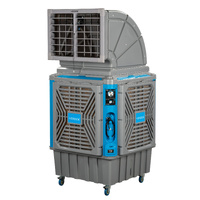
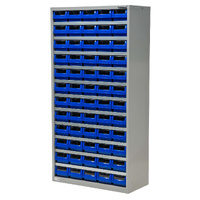







































 Trolleys & Hand Trucks
Trolleys & Hand Trucks Cage Trolleys
Cage Trolleys Cleaning Carts & Trolleys
Cleaning Carts & Trolleys Construction Trolleys
Construction Trolleys Custom Trolleys
Custom Trolleys Hand Trucks & Dollies
Hand Trucks & Dollies Laundry/Linen Trolleys
Laundry/Linen Trolleys Lifting Trolleys
Lifting Trolleys Order Picking Trolleys
Order Picking Trolleys Panel Cart Trolleys
Panel Cart Trolleys Platform Trolleys
Platform Trolleys Powered Trolleys
Powered Trolleys Shelf & Tiered Trolleys
Shelf & Tiered Trolleys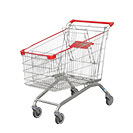 Shopping Trolleys
Shopping Trolleys Stainless Steel Trolleys
Stainless Steel Trolleys Tool Trolleys
Tool Trolleys Utility & Service Carts
Utility & Service Carts Lifting & Handling Equipment
Lifting & Handling Equipment Forklift Attachments
Forklift Attachments Jib Attachments
Jib Attachments Lifting Hoists & Pallet Hooks
Lifting Hoists & Pallet Hooks Load Skates & Tow Tugs
Load Skates & Tow Tugs Manual Stackers & Lifters
Manual Stackers & Lifters Pallet Jacks
Pallet Jacks Pallet Lifters
Pallet Lifters Pallet Rotators & Dispenser
Pallet Rotators & Dispenser Powered Pallet Trucks & Electric Lifters
Powered Pallet Trucks & Electric Lifters Scissor Lift Trolleys and Tables
Scissor Lift Trolleys and Tables Conveyor Equipment
Conveyor Equipment Conveyor Frames & Stands
Conveyor Frames & Stands Roller & Skate Conveyors
Roller & Skate Conveyors Ladders & Access Equipment
Ladders & Access Equipment Container & Yard Ramps
Container & Yard Ramps Ladders & Step Stools
Ladders & Step Stools Work Platforms & Crane Cages
Work Platforms & Crane Cages Drum Handling Equipment
Drum Handling Equipment Drum Storage & Bunding
Drum Storage & Bunding Drum Trolleys & Lifters
Drum Trolleys & Lifters Forklift Drum Handling
Forklift Drum Handling Waste Handling & Bins
Waste Handling & Bins Bin Lifters & Tippers
Bin Lifters & Tippers Plastic Waste & Wheelie Bins
Plastic Waste & Wheelie Bins Steel Waste & Tipping Bins
Steel Waste & Tipping Bins Waste Carts
Waste Carts Dangerous Goods Storage & Spillage
Dangerous Goods Storage & Spillage Aerosol Cans Storage Cages
Aerosol Cans Storage Cages Bunded Pallets & Storage
Bunded Pallets & Storage Corrosive Goods Storage Cabinets
Corrosive Goods Storage Cabinets DG Storage & Trolleys
DG Storage & Trolleys Flammable Liquid Cabinets
Flammable Liquid Cabinets Forklift Gas Storage Cages
Forklift Gas Storage Cages Site Storage
Site Storage Spill Kits
Spill Kits Shelving & Storage Equipment
Shelving & Storage Equipment Stillage & Transport Cages
Stillage & Transport Cages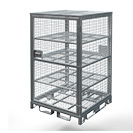 750 Series Cage Configurations
750 Series Cage Configurations Heavy Duty Cabinets
Heavy Duty Cabinets Heavy Duty Shelving
Heavy Duty Shelving Mega Bins & Pallets
Mega Bins & Pallets Packing & Workbenches
Packing & Workbenches Parts Trays & Stor-Pak Bins
Parts Trays & Stor-Pak Bins Pegboard & Louvre Panels
Pegboard & Louvre Panels Plastic Bins & Crates
Plastic Bins & Crates Plastic Handling Solutions Bins
Plastic Handling Solutions Bins Plastic Pallets
Plastic Pallets Stack & Nest Bins
Stack & Nest Bins Pallet Racking Accessories
Pallet Racking Accessories Workplace Equipment
Workplace Equipment Modular Workbenches
Modular Workbenches Electric Height-Adjustable Workbenches
Electric Height-Adjustable Workbenches Floor Matting
Floor Matting General Workplace Equipment
General Workplace Equipment Industrial Weighing Scales
Industrial Weighing Scales Packaging Machinery
Packaging Machinery Stationery Cupboards
Stationery Cupboards Storage and Stillage Cages
Storage and Stillage Cages Tool Trolleys
Tool Trolleys Tooling Cabinets
Tooling Cabinets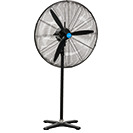 Workshop Fans and Coolers
Workshop Fans and Coolers Safety Barriers, PPE & Signage
Safety Barriers, PPE & Signage Barriers & Bollards
Barriers & Bollards First Aid Equipment
First Aid Equipment Gloves, Knives and PPE
Gloves, Knives and PPE Signage
Signage Cleaning & Site Supplies
Cleaning & Site Supplies Cleaning Equipment
Cleaning Equipment Cleaning Trolleys
Cleaning Trolleys Rubbish Bins
Rubbish Bins Signs & Traffic Supplies
Signs & Traffic Supplies Construction Equipment
Construction Equipment Construction Trolleys
Construction Trolleys Waste Handling
Waste Handling General Site Equipment
General Site Equipment Concrete Equipment
Concrete Equipment Site Storage
Site Storage Lifting Equipment
Lifting Equipment Verdex Specials
Verdex Specials









